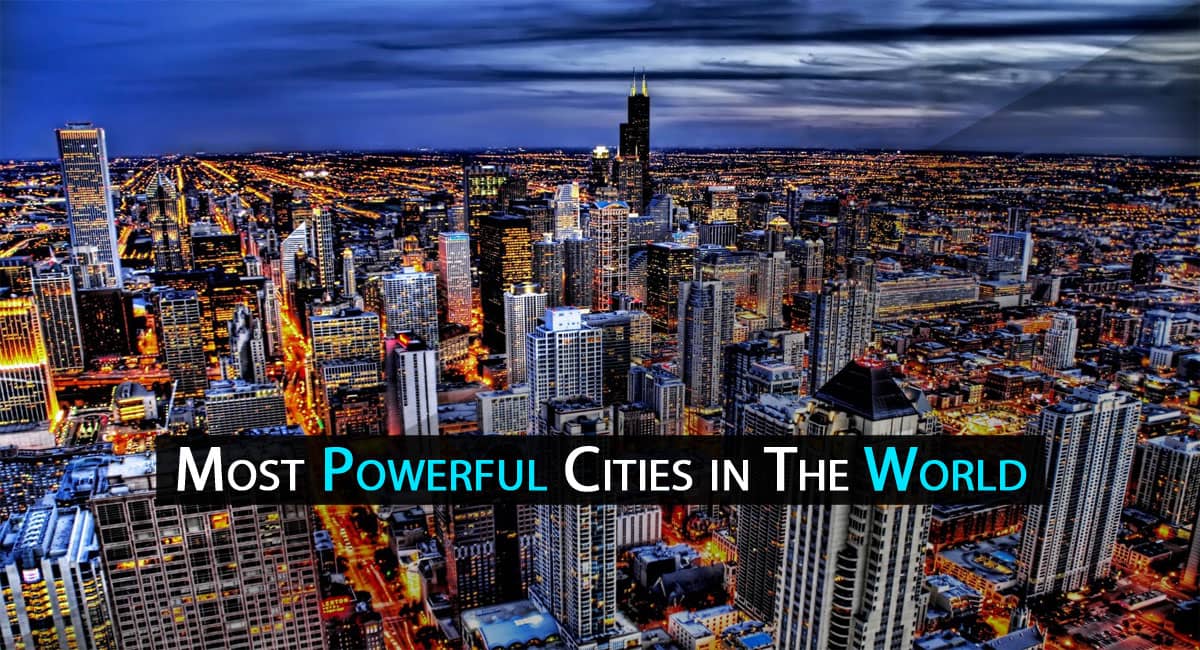Top 10 Most Powerful Cities in the World

The World Travel and Tourism Council has released a list of the top 10 most powerful cities in the world. These cities stand as beacons of economic resilience, cultural allure, and unwavering popularity, drawing tourists who are willing to invest substantially in their travel experiences.
Most Powerful Cities in the World
1. London – England
Resonance notes that despite the global challenges, London is far from quiet. The Tube’s pre-COVID cadence has been restored, and the city benefits from policies granting the U.K. the lowest corporate tax rate among G7 countries.
This fiscal advantage, coupled with a depreciated currency, has attracted investment and enticed tourists and new residents alike. London’s enduring appeal as a coveted city for property investment remains a testament to its economic buoyancy.
2. Paris – France
Paris, often hailed as the most visited city globally with 44 million visitors last year, continues to enchant travelers.
Resonance highlights the strategic investments made during the lower volume years, particularly the €250 million renovation of Terminal 1 at Paris Charles de Gaulle Airport.
The city’s commitment to infrastructure development, including ambitious rail projects, ensures visitors encounter a city that epitomizes pedestrianism and alfresco living.
3. New York City – United States America
Contrary to predictions of its decline, New York City stands firm at the third position on the global stage. Despite a dip in tourism to 33 million visitors in 2021, a mere fraction of 2019’s numbers, projections for upcoming years indicate a remarkable resurgence to 61 million visitors.
Major upgrades to international gateways, including LaGuardia Airport, Newark Liberty International Airport, and John F. Kennedy International Airport, underscore the city’s commitment to welcoming back visitors in style.
4. Tokyo – Japan
Japan’s capital, Tokyo, maintains a steadfast commitment to its tourism goals, targeting 60 million visitors and $136 billion in tourism revenue by 2030.
The city’s capacity to accommodate increased tourism is evident through expansions at Haneda, its main airport, and planned infrastructure developments such as an 18-minute rail link from arrivals to downtown by 2031.
Japan’s recent reopening to international travelers is expected to enhance further its status as the world’s best city for shopping.
5. Singapore
Singapore has ascended from its ninth position on the list of the Best Cities in the world, captivating visitors with iconic views and captivating projects.
The Great Southern Waterfront, a new waterfront district, is set to offer 9,000 housing units along Singapore’s southern coast.
Additionally, the forthcoming NS Square, an outdoor multipurpose venue in the Downtown Core area of Marina Bay, promises to enhance the city’s allure.
6. Dubai – United Arab Emirates
Renowned for its extravagant developments, Dubai aims to redefine its urban landscape with the 2040 Urban Masterplan.
This ambitious initiative seeks to create a “20-minute city,” where residents can access 80 percent of their daily needs and destinations within a 20-minute walk or bike ride.
The city’s penchant for breaking world records, epitomized by landmarks like the Palm Jumeirah and the Burj Khalifa, continues to shape its identity.
7. San Francisco – United States
Despite facing challenges such as a steep population decline and a 30 percent office vacancy, San Francisco remains undeterred.
Resonance commends the city for rolling out daring bike and pedestrian infrastructure, boasting 464 miles of bikeways, including 50 miles of new car-free/car-light streets in the past year.
San Francisco’s commitment to innovation, especially in the startup ecosystem, ensures its continued global appeal.
8. Barcelona – Spain
Barcelona is an almost ideal European city with great year-round weather and era-spanning neighborhoods.
Resonance highlights Barcelona’s commitment to sustainability, evidenced by more than 150 miles of new bike lanes and initiatives like Eixos Verds (Green Axis), which prioritizes shared spaces for cars, bikes, and pedestrians.
The city’s vibrant livability and rich history attract tourists beyond the city center to explore its shopping districts and museums.
9. Amsterdam – Netherlands
Amsterdam’s focus on care for others and the willingness of locals to contribute to the city’s livability is reflected in its high ranking in the Livability score.
Efforts to make tourism sustainable include banning cruise ships from the city center and promoting tours and programs highlighting the city’s enviable livability and Dutch history.
These initiatives encourage tourists to explore beyond the city center and appreciate Amsterdam’s shopping and museum offerings.
10. Seoul – South Korea
Seoul, South Korea’s capital, has transformed remarkably from a war-ravaged city to a high-tech hub. The city’s ascent is fueled by a low Poverty Rate ranking, the presence of global firms, and a burgeoning startup ecosystem.
Seoul’s innovation is complemented by its culinary scene, boasting 176 Michelin-rated venues and earning a #3 ranking in the Restaurants subcategory.
Conclusion
In conclusion, these ten most influential cities exemplify resilience, innovation, and enduring allure in the face of global challenges. As they continue to shape the global urban landscape, their commitment to economic vitality, cultural richness, and sustainable tourism ensures their lasting impact on the world stage.
Also Read: Best Nightlife Cities Around the World
Follow Top and Trending on Google News and receive the latest alerts and the main news about apps, technology, beauty, entertainment, and all the top 10 related posts.
